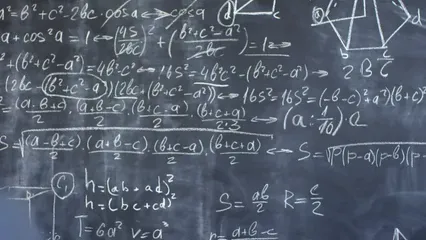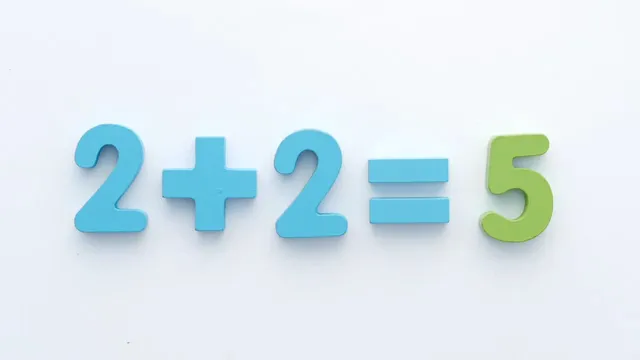Introduction
Statistics class boundaries are vital for organizing and analyzing data. They provide clear distinctions between data groups, helping to avoid overlaps and confusion. Class boundaries define the endpoints that separate different classes in a frequency distribution. This ensures that every data point fits neatly into a specific category, enhancing the accuracy of statistical analysis.
In frequency distributions, class boundaries are crucial for representing grouped data effectively. They help visualize how data points cluster around certain values, offering insights into trends and patterns. When dealing with large datasets, understanding class boundaries simplifies analysis by breaking down complex information into manageable segments.
For students, statisticians, and data analysts, mastering class boundaries is essential. It lays the groundwork for more advanced statistical techniques and improves data interpretation. By accurately defining these boundaries, one can make informed decisions based on the data at hand. Whether creating histograms or calculating central tendencies, class boundaries play a pivotal role in statistics.
In this article, we will explore the definition of class boundaries, their significance, and their application. We will cover how they contribute to creating frequency distributions and histograms, all while keeping our content engaging and informative. Get ready to enhance your statistical skills and understanding of class boundaries!

What are Class Boundaries?
1.1 Definition of Class Boundaries
Class boundaries are the values that separate classes in a frequency distribution. They serve as the dividing lines between different categories of data. Unlike class limits, which define the maximum and minimum values of each class, class boundaries eliminate gaps between these classes. For example, if one class is defined as 10-19 and the next as 20-29, the class boundary would be 19.5. This boundary helps clarify where one class ends, and another begins, ensuring that data is categorized correctly.
In essence, class boundaries create a more accurate representation of data, especially when dealing with continuous datasets. This adjustment is crucial because it prevents ambiguity in data classification. By using class boundaries, analysts can summarize data effectively and gain insights that would be less clear without them.

1.2 Importance of Class Boundaries
Class boundaries are essential for several reasons. First, they help eliminate gaps in data representation. By defining the boundaries, statisticians can present a continuous flow of data, allowing for more accurate analysis. For instance, in a dataset representing students’ test scores, using class boundaries can help visualize how scores are distributed across different ranges.
Moreover, class boundaries improve data visualization. When constructing histograms, clear boundaries define the width of each bar. This clarity allows viewers to grasp the data’s distribution quickly. Without well-defined boundaries, histograms could misrepresent data, leading to incorrect conclusions.
Additionally, class boundaries facilitate calculations of key statistical measures. They enable the computation of the mean, median, and mode by ensuring that every data point is accounted for within its respective class. This accuracy is crucial when making data-driven decisions, whether in academic settings or business environments.
In summary, understanding class boundaries is vital for anyone working with statistical data. They enhance clarity, improve data analysis, and contribute to more accurate visualizations. By mastering the concept of class boundaries, you pave the way for more effective and insightful statistical work.

How to Calculate Class Boundaries
2.1 Steps to Calculate Class Boundaries
Step 1: Identify Upper and Lower Limits of Classes. First, gather your class intervals. For instance, if you have classes like 10-19 and 20-29, the upper limit of the first class is 19, and the lower limit of the second class is 20.
Step 2: Calculate the Gap Between Classes. Next, determine the gap between these limits. The gap is simply the difference between the upper limit of one class and the lower limit of the next class. In our example: 20 (lower limit of the second class) – 19 (upper limit of the first class) = 1.
Step 3: Apply the Formula to Find Boundaries. Now, use this gap to adjust the limits. To find the class boundaries, subtract half the gap from the lower limit and add half the gap to the upper limit of each class.
– Lower boundary of the first class: 19 – (0.5) = 18.5
– Upper boundary of the first class: 19 + (0.5) = 19.5
– Lower boundary of the second class: 20 – (0.5) = 19.5
– Upper boundary of the second class: 20 + (0.5) = 20.5
Thus, your class boundaries are 18.5-19.5 and 19.5-20.5.

2.2 Detailed Examples
Example 1: Basic Calculation
Let’s dive into a straightforward example. Suppose you have two classes: 10-19 and 20-29.
– Step 1: Upper limit of the first class is 19; lower limit of the second is 20.
– Step 2: Gap = 20 – 19 = 1.
– Step 3:
– Lower boundary for 10-19: 19 – 0.5 = 18.5
– Upper boundary for 10-19: 19 + 0.5 = 19.5
– Lower boundary for 20-29: 20 – 0.5 = 19.5
– Upper boundary for 20-29: 20 + 0.5 = 20.5
So, the boundaries are 18.5-19.5 and 19.5-20.5.

Example 2: Complex Calculation
Now, let’s tackle a more intricate dataset. Imagine you have the following classes:
– 60.9 – 61.9
– 62.0 – 63.0
– 63.1 – 64.0
Step 1: Upper limit of the first class is 61.9; lower limit of the second class is 62.0.
Step 2: Gap = 62.0 – 61.9 = 0.1.
Step 3:
– Lower boundary for 60.9 – 61.9: 61.9 – (0.1 / 2) = 61.85
– Upper boundary for 60.9 – 61.9: 61.9 + (0.1 / 2) = 61.95
– Lower boundary for 62.0 – 63.0: 62.0 – (0.1 / 2) = 61.95
– Upper boundary for 62.0 – 63.0: 62.0 + (0.1 / 2) = 62.05
– Lower boundary for 63.1 – 64.0: 63.1 – (0.1 / 2) = 63.05
– Upper boundary for 63.1 – 64.0: 63.1 + (0.1 / 2) = 63.15
The boundaries yield:
– 61.85 – 61.95
– 61.95 – 62.05
– 63.05 – 63.15

2.3 Common Mistakes to Avoid
Now that we’ve covered how to calculate class boundaries, let’s discuss some pitfalls.
1. **Ignoring Gaps:** Forgetting to calculate the gap can lead to overlapping classes. Always check your boundaries and ensure there’s no overlap.
2. **Rounding Errors:** Rounding numbers inconsistently can skew your results. Stick to the same decimal places for accuracy.
3. **Misapplying Formulas:** Ensure you follow the steps in order. Skipping steps can lead to confusion and incorrect boundaries.
4. **Using Class Limits Directly:** Class boundaries are not the same as class limits. Remember to adjust your limits to find the boundaries.
By following these steps and avoiding common mistakes, you can confidently calculate class boundaries. This understanding lays the groundwork for successful data analysis and visualization. Stay tuned for the next section, where we’ll explore the applications of class boundaries in statistics!

3.2 Role in Histograms
Class boundaries are essential when creating histograms. Imagine trying to visualize data without these boundaries—like trying to bake a cake without measuring cups! Class boundaries ensure that data points are accurately grouped, creating a clear representation of frequency distributions.
When constructing a histogram, each bar represents a class interval. The height of the bar indicates the frequency of data points within that range. Class boundaries help define the edges of each bar, preventing overlaps that could confuse viewers. For instance, if one bar ends at 19.5, the next should start at 19.5, creating a seamless transition.
Visually, this clarity is crucial. A well-defined histogram allows for quick interpretation of data trends. Without class boundaries, histograms might look like a jumbled mess. They help highlight peaks and valleys in data, making it easier to spot patterns and draw conclusions.
Consider the following histogram illustration:
In this graph, the class boundaries clearly define each interval. Notice how the bars touch at the boundaries? This design reflects the continuity of the data, enhancing its visual appeal and interpretability.

3.3 Statistical Analysis
Class boundaries play a pivotal role in statistical analysis. They provide a framework for calculating essential measures like mean and median. By using class boundaries, statisticians can ensure that every data point is appropriately categorized, leading to more accurate calculations.
When calculating the mean, class boundaries help determine the midpoint of each class. This midpoint serves as a representative value for all data points in that interval. By multiplying each midpoint by its respective frequency and summing these products, you can find the overall mean of the dataset. For a deeper understanding of the concept of mean, you can explore what does mean identically distributed in statistics.
Understanding the mean is essential for accurate statistical analysis. Learn more about the mean in statistics.
Similarly, for calculating the median, class boundaries help identify the class containing the median value. By understanding where the data points lie within the classes, statisticians can pinpoint the median interval. This approach is particularly useful with large datasets, where individual data points would be overwhelming.
In summary, class boundaries are not just a technical detail; they are instrumental in ensuring the accuracy and reliability of statistical analyses. By providing clear divisions, they enhance data interpretation and support informed decision-making.

5.2 Why do we subtract 0.5 in calculations?
In statistics, clarity is key. When dealing with class limits, things can get a bit murky. That’s where subtracting 0.5 comes into play. This little adjustment helps smooth out the edges in data classification.
Imagine you have a class limit of 20-29. Without adjustment, a score of 20 might be confusing. Does it belong to 20-29 or the next class? By subtracting 0.5, we redefine the bounds. The lower boundary becomes 19.5, and suddenly it’s crystal clear! This method ensures that no data point straddles two classes, eliminating ambiguity.
This practice is especially useful when working with continuous data. It creates a seamless transition between classes, making data categorization straightforward. In short, subtracting 0.5 is all about precision. It protects against overlap and keeps things neat, allowing for more accurate statistical analysis.

5.3 How do class boundaries affect data visualization?
Class boundaries play a significant role in data visualization, particularly in histograms. Think of a histogram as a party. Each bar represents a group of data, and class boundaries are the bouncers ensuring no one sneaks into the wrong group.
When constructing a histogram, each bar’s height reflects how many data points fall within its range. With clear class boundaries, these bars touch without overlap. For instance, if one class ends at 19.5, the next must start at 19.5. This continuity presents a clean visual representation of data.
Without proper boundaries, histograms can look like a chaotic mess. Misleading gaps or overlaps could lead to wrong conclusions about the data. Clear boundaries allow viewers to spot trends and patterns quickly. They highlight peaks and dips, making the data’s story more accessible. In essence, proper class boundaries enhance both the aesthetics and accuracy of data visualizations.

5.4 Can class boundaries be used for qualitative data?
Class boundaries are typically associated with quantitative data, but can they apply to qualitative data? Well, not in the traditional sense! Qualitative data deals with categories rather than numerical ranges. Think colors, names, or types of fruit—no boundaries in sight!
However, you can create qualitative classes based on characteristics. For example, you might categorize students as “Excellent,” “Good,” or “Needs Improvement.” While these categories don’t have numerical boundaries, you can still analyze them for trends.
In summary, class boundaries don’t really fit into qualitative data, but you can still use grouping to analyze qualitative variables. It’s all about organizing information to make sense of it, whether through numbers or distinct categories.

5.5 What resources can help further understanding of class boundaries?
Ready to dive deeper into the world of class boundaries? Here are some stellar resources to boost your understanding.
1. **Books:**
– “Statistics for Dummies” by Deborah J. Rumsey: A user-friendly introduction to statistical concepts, including class boundaries.
– “The Art of Statistics” by David Spiegelhalter: This book demystifies statistics and provides insights into data interpretation.
2. **Websites:**
– Statology: A great resource for practical statistics, featuring articles on class boundaries and more.
– Khan Academy: Offers free courses on statistics covering everything from basic concepts to advanced topics.
3. **Tools:**
– Online calculators: Tools like Stat Trek can help you calculate class boundaries quickly.
– Statistical software: Programs like R Programming for Data Analysis or Python Programming Language allow for more complex statistical analysis and visualizations.
These resources can further enhance your understanding of class boundaries and their application. Happy studying!

Conclusion
Understanding class boundaries is crucial for accurate data analysis. They help eliminate ambiguity, ensuring precise classification of data points. By defining clear intervals, class boundaries enhance data visualization, especially in histograms. This clarity allows for quick interpretation of trends and patterns, making data easier to digest.
Moreover, while class boundaries are primarily for quantitative data, knowledge of grouping can still apply to qualitative data. Organizing information effectively is key to understanding any dataset.
Continuing your education through books, websites, and statistical tools can deepen your grasp of this concept. As you practice calculating and applying class boundaries, you’ll find they significantly improve your ability to analyze data. Embrace this concept, and you’ll pave the way for more insightful statistical work!

Encourage Readers to Practice Calculating Class Boundaries with Different Datasets
Practice makes perfect! To truly grasp the concept of class boundaries, it’s essential to roll up your sleeves and get your hands dirty with some datasets. Here are a few suggestions to get you started:
1. **Gather Your Own Data:** Take a look around you! You can collect data on anything from daily temperatures in your city to the number of books read by your friends in a month. Once you have your data, create class intervals and practice calculating the corresponding class boundaries.
2. **Use Online Datasets:** Numerous websites offer free access to datasets. Websites like Kaggle or government statistics databases can provide you with varied datasets. Pick a dataset that interests you and try calculating class boundaries.
3. **Simulate Data:** If you’re feeling adventurous, use statistical software or programming languages like R or Python to generate random data. Create your own frequency distribution and calculate those class boundaries!
4. **Collaborate with Peers:** Partnering with classmates can enhance your learning experience. Share your datasets, and challenge each other to calculate boundaries. Discuss any discrepancies to reinforce your understanding.
5. **Check Your Work:** Don’t forget to verify your calculations! Use online calculators or statistical software to cross-check your results. This not only helps catch mistakes but also builds your confidence in your skills.
By engaging with different datasets, you’ll solidify your understanding of class boundaries. With practice, you’ll be able to analyze data like a pro in no time!

Additional Resources
Looking for tools to aid your understanding of class boundaries? Here are some helpful resources:
– **Online Calculators:**
– **Tutorials:**
– How to Find Class Boundaries
– Mathway’s Statistics Examples
– **Statistics Software:**
– Statistical Analysis Software: Programs that can help you analyze your data effectively.
– Data Visualization Tools: Enhance your ability to visualize data trends and insights.
These resources will help deepen your understanding of class boundaries and enhance your statistical analysis skills. Happy calculating!
Please let us know what you think about our content by leaving a comment down below!
Thank you for reading till here 🙂
All images from Pexels




